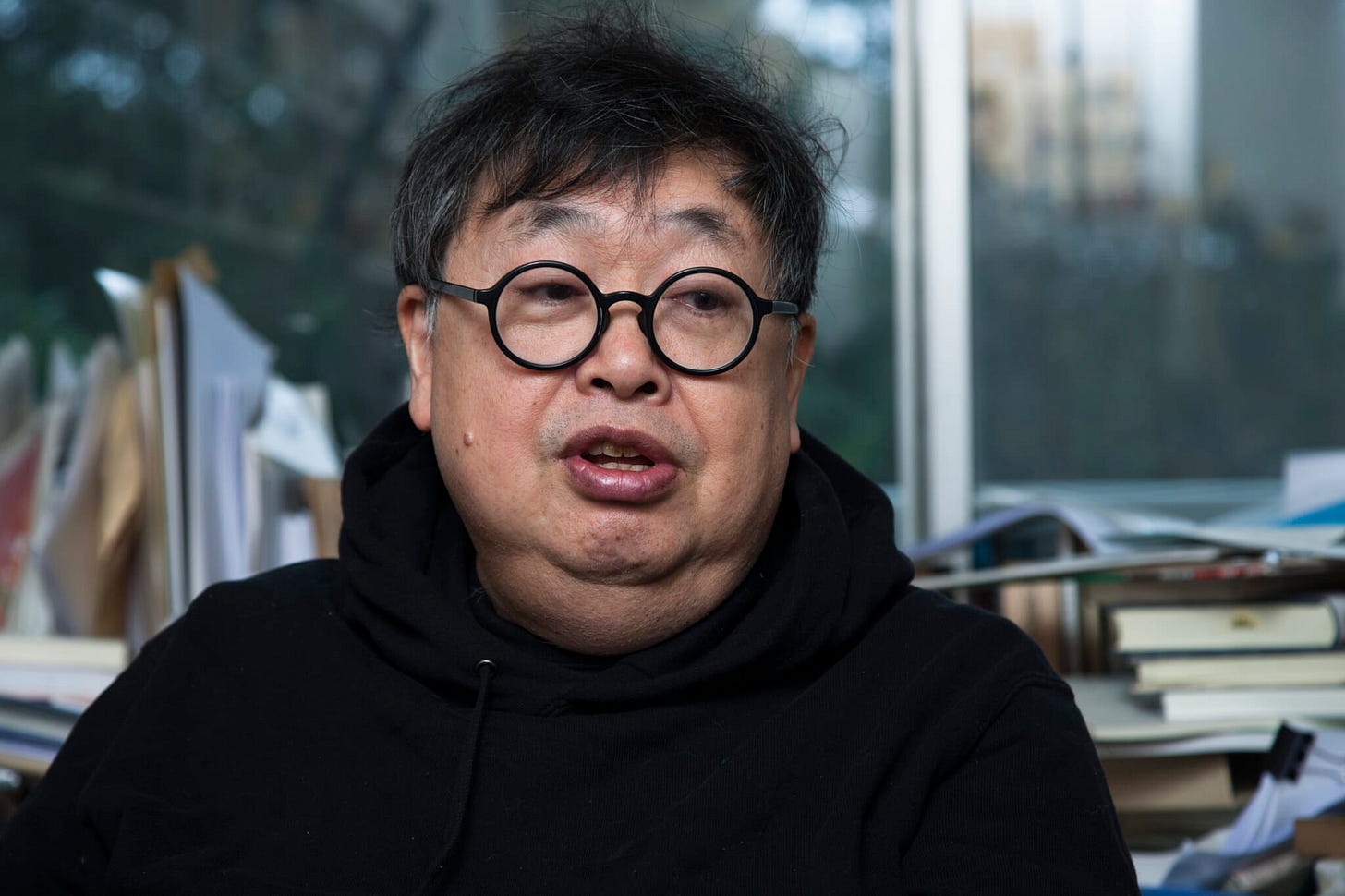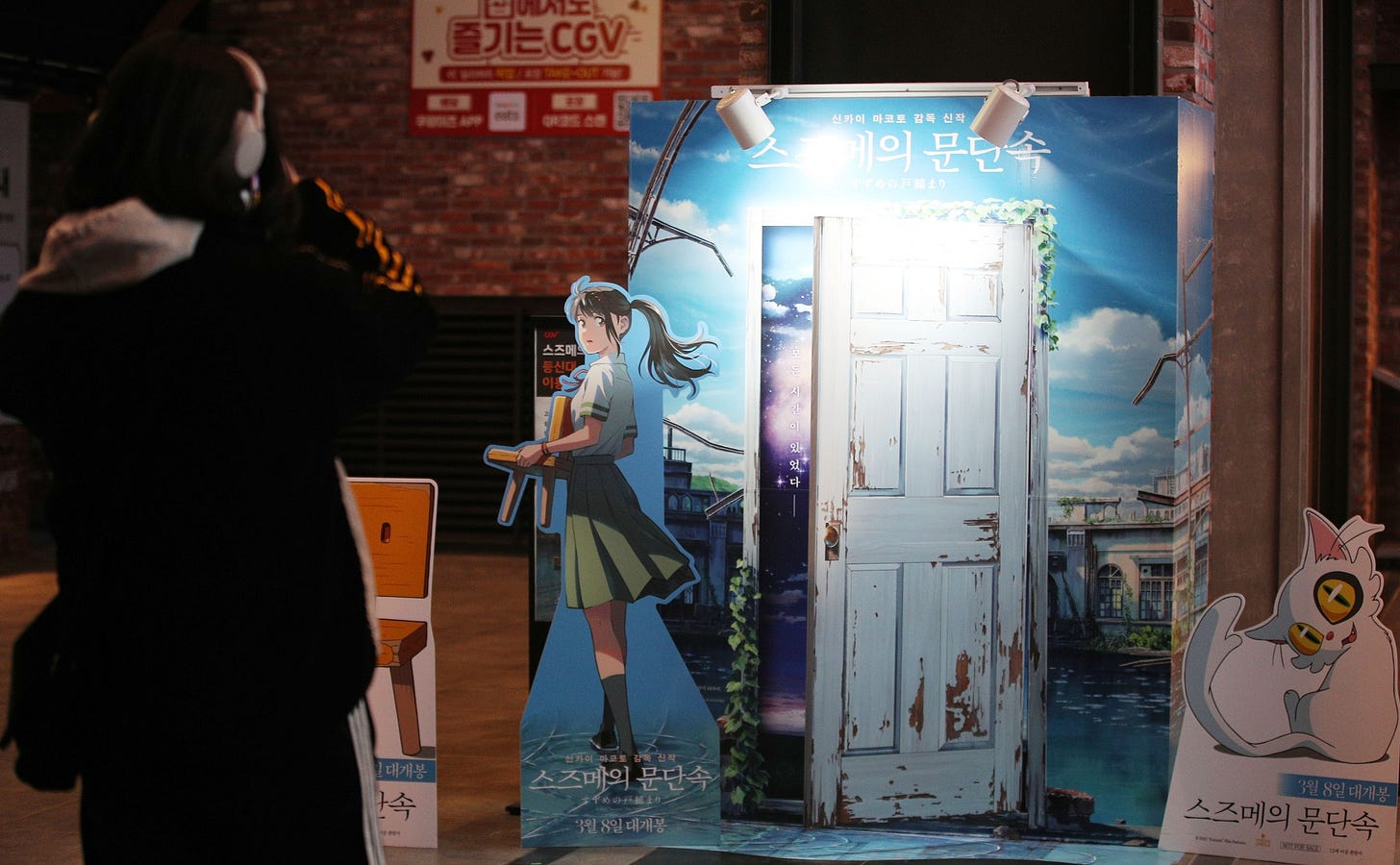Japanese webtoon creators prefer LINE Manga
Plus: Cool Japan criticized by prominent scholar; 'Suzume' becomes the top Japanese film in South Korea; One studio's decision to hire its animators full time; and more
This is your weekly Animenomics briefing, covering the business of anime and manga. Today is Wednesday, May 10, 2023.
In case you missed it: The Japanese government downgraded the legal status of COVID-19 to the same level as seasonal influenza, one week after removing all border control measures for arrivals into the country.
Seeking new Japanese webtoons? Try LINE and Twitter
Webtoons, the vertically-scrolling comics that originated in South Korea and are read on smartphones, are growing in popularity in Japan. A new online survey of people who have drawn manga in the past year shows that LINE Manga, Twitter, and Instagram are the top platforms for publishing in the webtoon format.
Why it matters: The survey done by MMB Labo, a Tokyo-based mobile marketing data research firm, shows that artists are producing webtoons almost as often as manga in the traditional horizontal reading format.
By the numbers: Of 1,320 respondents who have drawn manga in the past year, 46.8 percent created webtoons, and 50.8 percent drew traditional manga. About 31.7 percent drew comics in another format. Multiple selections were allowed.
Among those who drew manga in the traditional horizontal format, 58.9 percent expressed interest in drawing webtoons.
Slightly more than half of the respondents who drew webtoons have tried submitting their work to a manga reading app publisher.
LINE Manga was the preferred manga app for publishing webtoons at 34.2 percent of webtoon artists, followed by Pixiv Comic, Comico, and Comici.
Webtoon artists who published independently prefer Twitter and Instagram, followed by local Japanese platforms Mixi and Pixiv.
What to watch: A market research report published by QY Research Group last year predicts the global webtoon market will grow to US$27.5 billion by 2028.
Anime, manga are exploited for propaganda, critic says

More than ten years after the inception of Cool Japan, the government campaign to promote the image and culture of Japan overseas, the program is finding more and more vocal critics among media scholars.
Driving the story: In an interview with The Mainichi newspaper, social critic Eiji Otsuka accuses Cool Japan of exploiting the efforts of anime and manga creators for free political and cultural propaganda.
Otsuka is a leading Japanese media theorist and is the author of Cool Japan in the Greater East Asia Co-Prosperity Sphere (Shueisha Shinsho, 2022), exploring cultural propaganda by imperial military during World War II.
“It was us, the creators, who made the effort to convey the Japanese language and culture,” says Otsuka, “and it was the overseas fans who made the effort to learn and accept them.”
Between the lines: Government policies blindly promote anime and manga in other countries without understanding local context, Otsuka argues.
He recounts observations by colleagues in Israel of tempered excitement by Israeli youth toward Attack on Titan cosplays. Drawing parallels between the costumes and the Israeli military uniform, they no longer saw the work as fiction given the possibility of being conscripted to face a Palestinian “wall”.
Taihei Imamura, who published his seminal work Manga Film Theory in 1941, influenced anime’s use for wartime propaganda. Many of the methodologies developed then are still used in popular culture, advertisements, and visual magazines today.
Why it matters: Keidanren, the powerful Japan Business Federation lobbying group, is urging the government to renew efforts to counter South Korea’s soft power using anime and manga.
Thomas Baudinette, a senior lecturer in Japanese and international studies at Australia’s Macquarie University, criticized the group’s combative stance on Korean pop culture as alienating fans who enjoy the media of both cultures simultaneously.
Clippings: Suzume breaks more records in South Korea

Ken Akamatsu, the Love Hina and Negima! creator who became the first manga artist elected to the upper chamber of Japan’s national legislature in 2022, will be a guest at Japan Expo in Paris this July. (Press release)
Suzume becomes the first Japanese film, animated or otherwise, to sell more than 5 million tickets in South Korea. Even more viewers are expected with a Korean-dubbed version that will start screening on May 17. (The Korea Times)
Indian film distributor PVR Pictures, whose parent company owns one of the country’s largest movie theater companies, is holding a Makoto Shinkai Film Festival showcasing the director’s portfolio this month. (IGN India)
Detective Conan: Black Iron Submarine becomes the first film in the franchise to earn more than ¥10 billion in the domestic box office after 24 days in theaters. (Cinema Today)
Publisher Viz Media is launching a manga subscription service for North American readers with 148 Shogakukan titles in its catalog and simultaneous chapter releases for 15 titles. (The New York Times)
Promoting good manners in promoting anime tourism
“While it is desirable for anime fans to become fans of the locality, ‘meccas’ are also living spaces for local residents. In order to avoid the confusion and trouble caused by sudden visits by a large number of people, it is necessary for those involved to take appropriate measures and strongly urge people to observe good manners.”
—Yomiuri Shimbun editorial on the promotion of anime “meccas” by local governments
Context: With Japan opening doors to foreign tourists once again, an editorial published by the center-right-leaning newspaper Yomiuri Shimbun is calling on local government officials to urge tourists visiting rural anime “meccas” to mind their manners and avoid disrupting local communities.
One studio turns its animation team into full-time staff

Nissin, makers of Japan’s famed Cup Noodles, stunned Internet audiences in 2017 when it released dazzling animated commercial shorts, including one depicting an older Kiki from Kiki’s Delivery Service. The studio behind those shorts, Bakken Record, is differentiating itself through a business model uncommon in the anime industry today.
Driving the story: In an interview with online news portal Akiba Souken about Bakken Record’s recent anime Ippon Again!, animation producer Yutaka Omatsu explains the studio’s digital transformation and in-house production model.
Rather relying on freelance animators like most of the anime industry today, Bakken Record turned its team of animators into full-time employees in April.
“Animation production has become much more difficult than it was in the old days, to the point that delays are no longer uncommon,” says Omatsu, voicing concern about the unsustainability of constantly assembling and disbanding freelance teams for anime production.
In making animators in-house, Omatsu isn’t shy about the studio taking inspiration from the successes of Kyoto Animation and Ufotable, who follow the same model.
Some context: Animation studios hired full-time animators when the first anime boom began in the 1960s, but a series of studio bankruptcies in the 1980s drove most animators to become freelancers.
“Rather than making something as a team then disbanding, then create once more and disband again, I really believe that staying in the same team and increasing the amount of accumulated time together will lead to great works,” says Omatsu.
What to watch: Bakken Record is currently in the production stages of Turkey!, an original anime series about a high school bowling team.
Thanks for reading this week’s issue of Animenomics. Have feedback or questions about a story? Send us an email by replying to this newsletter from your inbox.



